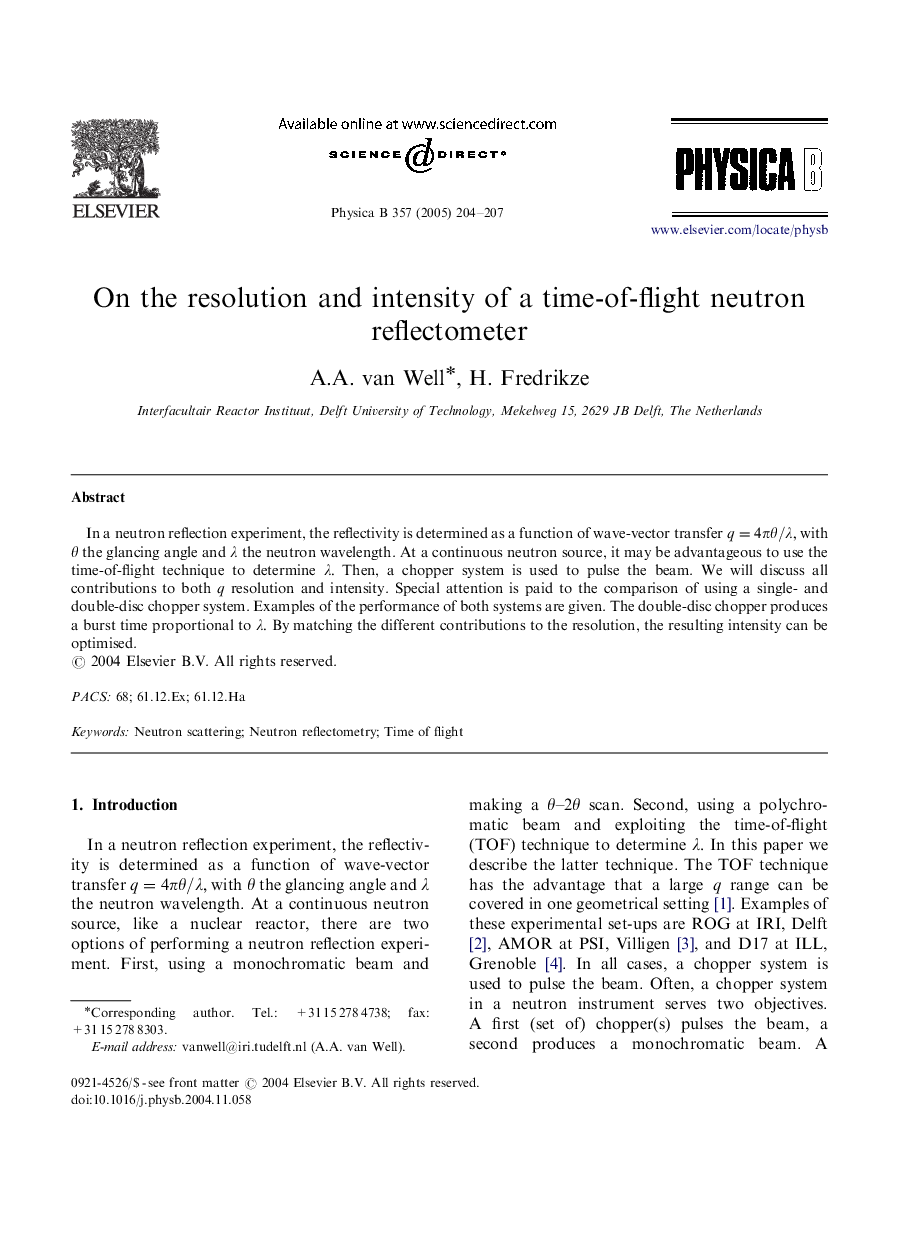| Article ID | Journal | Published Year | Pages | File Type |
|---|---|---|---|---|
| 9837888 | Physica B: Condensed Matter | 2005 | 4 Pages |
Abstract
In a neutron reflection experiment, the reflectivity is determined as a function of wave-vector transfer q=4Ïθ/λ, with θ the glancing angle and λ the neutron wavelength. At a continuous neutron source, it may be advantageous to use the time-of-flight technique to determine λ. Then, a chopper system is used to pulse the beam. We will discuss all contributions to both q resolution and intensity. Special attention is paid to the comparison of using a single- and double-disc chopper system. Examples of the performance of both systems are given. The double-disc chopper produces a burst time proportional to λ. By matching the different contributions to the resolution, the resulting intensity can be optimised.
Related Topics
Physical Sciences and Engineering
Physics and Astronomy
Condensed Matter Physics
Authors
A.A. van Well, H. Fredrikze,
